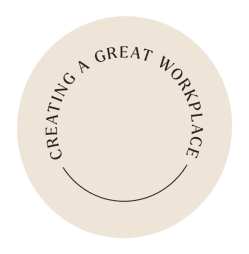As an organizational leader, you and your teammates are likely immersed in determining your return-to-work strategy in what many are calling “the pandemic recovery stage.” While staggered hours, hybrid models, workplace safety and office utilization are key topics, “Unstoppable Cultures” are increasing their dialogue in these three key areas.

1. Flexibility:
Snapping back—like a rubber band—to pre-pandemic models is not in the lexicon for most of today’s workforce. According to a research survey by Gensler Research Institute, 71% of people prefer to have a hybrid arrangement or work entirely remotely going forward. As I’m typing this month’s newsletter, palm trees dance overhead so I get the desire for work flexibility. Allowing modification to HOW we work reduces commute time and factors in the needs of parents with children at home and people who look after elderly family members.
As we discussed in a recent Unstoppable Cultures free webinar with Gagen MacDonald culture expert, MaryCay Durrant: “Flexibility allows people to bring more commitment and passion. They feel more aligned and respected as an employee if they are trusted and given some flexibility.”
2. Mental Health Focus:
During the pandemic, about 4-in-10 adults in the U.S. have reported symptoms of anxiety or depressive disorder, a share that has been largely consistent, up from 1-in-10 adults who reported these symptoms from January to June 2019. With this level of increase in mental health pressures, employers must be even more vigilant in their support.

Since May is Mental Health Awareness Month, The HR Exchange Network shared 6 ways that employers can play a role. One action we will highlight is to make it the norm to have open dialogue around difficult issues. Based on a McKinsey survey, only 30% of employees say they feel comfortable talking to their supervisor about mental health.
The healthiest organizations create trust and safe environments for such conversations to occur, including third-party assistance programs.
3. Two-Way Communication:
By enabling real, two-way communication, leaders may turn the pandemic crisis into an opportunity to strengthen corporate culture, increase employee engagement and boost productivity and loyalty over the long run.
Korn Ferry’s leadership guide notes that giving employees a voice is “good for the organization” because “leaders don’t need to have all the answers. The best ideas will often come from far-flung corners of the organization.” It is similarly beneficial to employees: “To be engaged, employees must feel heard and understood. Moreover, they must see their thoughts and reactions come to life in the real world. This is an opportunity for new leaders and innovators to emerge.”
The book Talk, Inc.: How Trusted Leaders Use Conversation to Power Their Organizations, by Boris Groysberg and Michael Slind, explores how companies’ outreach strategies evolved from top-down, command-centric communiques to something more informal, immediate, and personal—from a C-suite monologue to a genuine back-and-forth between leaders and employees.

One of the tactics in this evolving model for communications includes employees in telling the company story. At Unstoppable Cultures, one of our pillars is “Sharing Stories Relentlessly” so we salute organizations that use the power of storytelling, from the viewpoint of employees and customers, to drive their brands and their cultures.
Together, we truly can build Unstoppable Cultures!
Sincerely,







